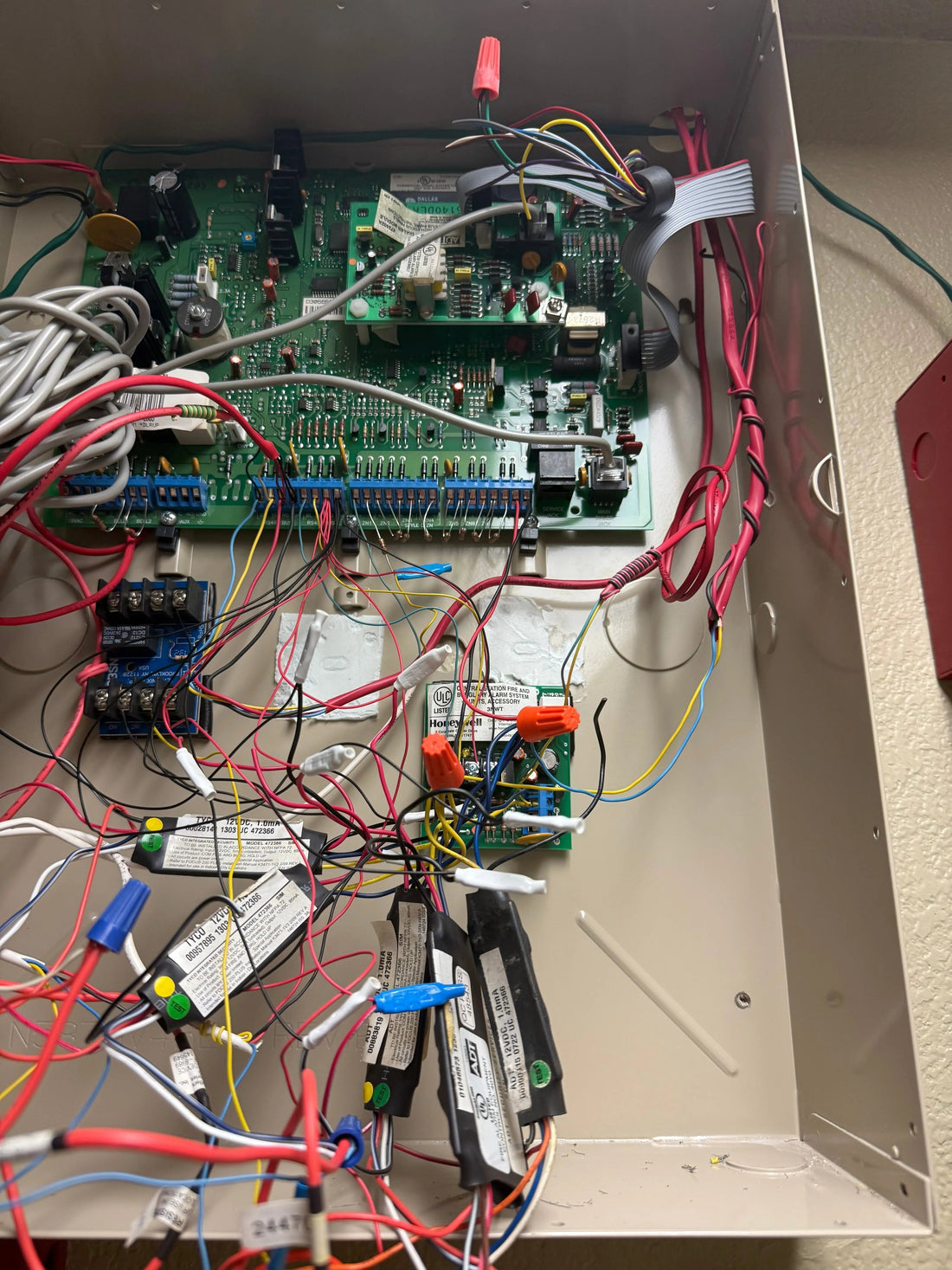
Texas Fire Alarm “Grandfathered” Code: AHJ, Rule 34.616 & NFPA 5000 vs. NFPA 101
Does an existing building have to upgrade its fire alarm system to the latest code? In Texas, it often depends on when the building was permitted and whether its occupancy/use has changed. As long as a building continues in the same approved use and layout, many requirements are effectively “grandfathered” under the original permit—subject to the Authority Having Jurisdiction (AHJ).
Texas Administrative Code: Repairs vs. Upgrades (Rule 34.616)
Rule §34.616(5) allows certain like-for-like replacements to be treated as a repair, not a full system upgrade. In plain language:
- Same location & similar characteristics: Replacing equipment in the same spot with the same or similar electrical and functional characteristics that are listed as compatible with the existing system can be considered a repair.
- New parts meet current standards: The replacement equipment must comply with currently adopted standards, but the entire system is not automatically required to be brought up to the newest code.
- Always ask the AHJ: The AHJ determines whether plans or a permit are required and whether a broader update is necessary.
When “Grandfathering” Typically Applies
- The building continues in the same occupancy classification and use it had when originally permitted.
- Work is limited to standard repairs/replacements with compatible equipment (see Rule §34.616(5)).
- No changes that would alter required fire protection (no new addition, relocation, or major rehab that affects egress or life-safety systems).
When You Usually Must Update to Current Code
- Change of use/occupancy (e.g., office to assembly).
- Rehabilitation or additions that impact egress, fire protection, or system design.
- Relocation or significant damage to the building requiring new permits.
- AHJ directive based on safety or compliance findings.
NFPA 5000 vs. NFPA 101: How They Treat Existing Buildings
- NFPA 5000 (Building Construction & Safety Code): Generally applies to new work—additions, relocations, change of use, or rehabilitation. Existing buildings often remain under the rules in effect when they were permitted, unless one of those triggers occurs.
- NFPA 101 (Life Safety Code): Contains provisions for both new and existing buildings. Even when a structure is “existing,” NFPA 101 has requirements that continue to apply to maintain life safety.
Quick Reference: Do I Need a Full Upgrade?
| Scenario | Typical Path | AHJ/Permit? |
|---|---|---|
| Replace device with same/similar compatible unit | Repair (Rule §34.616(5)); new device meets current standards | Consult AHJ; plans/permit may or may not be required |
| Add new area or change occupancy | New design to current code for affected scope | Yes—coordinate with AHJ early |
| Major rehab affecting fire protection/egress | Upgrade to current code for impacted systems | Yes—plans, permits, inspections |
| System relocation or post-damage rebuild | Treat as new work; current code applies | Yes—AHJ will define scope |
Best Practices
- Document scope: Clarify if the work is a repair vs. an alteration or addition.
- Verify compatibility: Use listed components compatible with the existing control equipment.
- Engage the AHJ early: Ask about permits, drawings, and any required testing.
- Recordkeeping: Keep submittals, cut sheets, compatibility listings, and test results.
Need Help Interpreting Your Situation?
We assist owners, GCs, and facility teams in Texas with repair vs. upgrade decisions, AHJ coordination, and compliant documentation. Explore our Fire & Life Safety services or request a consultation.
Informational only—not legal advice. Codes and adopted editions vary by jurisdiction. Always confirm requirements with your local AHJ.
